#learn korean words
Text
This video is only available to people who are members of Acau's ( 악어 ) Youtube, but one of his fans posted a short clip Acau shared of his and Quackity's conversation testing out the QSMP translator!
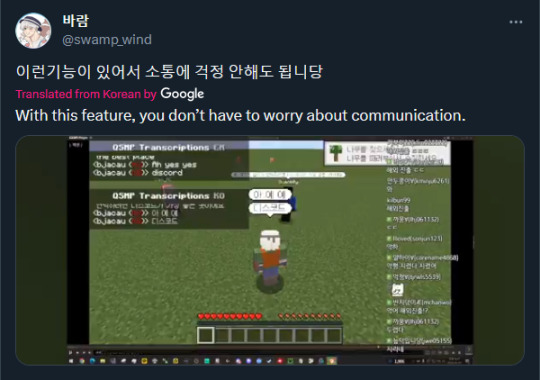
[ Original Tweet ]
#Acau#악어#QSMP#Quackity#That's so cool!#I cannot speak any Korean whatsoever but I'm very curious and excited to watch him and learn#My language knowledge is English > Japanese > Spanish#which. is ironic since I'm Mexican#but some Korean words sound very similar to a few Japanese words and it always trips me up hearing them#I'm so excited to meet 악어 and his community!!! aaaaa!!!#everyone is so excited I love seeing everyone getting so excited to share information about the streamers they love#Anyways shoutout to Gaby for the heads up about this. They don't even use Tumblr but they're wonderful
520 notes
·
View notes
Text
Korean Swear Words
if you're a frequent k-drama watcher, then you probably know a thing or two about swearing in Korean. but it actually goes so much deeper than what is popularly known on the internet so here is a list of the more common Korean swears! obviously, this is just for funsies and you probably shouldn't be going around saying these words to people.
바보 (babo) - dummy, idiot, stupid
등신 (deungshin) - dumbass
병신 (byeongshin) - literally translates to "diseased body (病身)", and has a similar connotation to the English r-slur (but is very rarely used in that way)
씨발 (shibal) - fuck, comes from archaic verb 씹하다 shibhada (to have sex)
새끼 (saekki) - literally means "animal offspring" but is used as a swear in certain circumstances, it's also used affectionately when mothers refer to their children. you might hear a Korean mom say something like, "내 새끼~~" (nae saekki) which literally means "my babyyyy" in English.
개___ (gae___) - literally means "dog" but is used in front of other swear words to increase the severity and offensiveness
eg. 개새끼 (gae saekki) - son of a bitch
eg. 개씨발 (gae shibal) - FUUUUCCCCCK
닥쳐 (dakchyeo) - shut up
꺼져 (ggeo-jyeo) - fuck off
뒈지다 (dwejida) - to die and go to hell
놈/년 (nom/nyeon) - bastard/bitch, can also have other words in front of it to describe the person
eg. 미친놈/년 (michin nom/nyeon) - crazy bastard/bitch
eg. 썅놈/년 (shyang nom/nyeon) - fucking bastard/bitch
지랄 (jiral) - speaking nonsense/spouting bullshit
또라이 (ttorai) - a freak
엿 먹어 (yeot meogeo) - literally means "eat yeot" (a traditional Korean confectionary), it basically means "fuck you", "eat shit", etc
젠장 (jenjang) - interjection such as saying shit! fuck! damn it!
좆 (jot) - dick
보지 (boji) - pussy
촌놈 (chonnom) - country bumpkin
#kdrama#korean#korean linguistics#koreanlanguage#korean language#korean drama#linguistics#language#language learning#korea#south korea#kpop#squid#squid game#the glory#all of us are dead#swear#swear words#profanity
110 notes
·
View notes
Text

I'm a frog 🐸
난 개구리야.
In Korean there are few ways to say "I" depending on particle and polite speech level.
The most intimate used only among close friends and family, younger people than us or our subordinates is to say about yourself as
나+ -은/는 (particle) ➡️ 나는 (난 abbreviated form)
나+ -이/가 (particle) ➡️ 내가
On the other hand, when someone is older than us, is higher in the "hierarchy" (workplace, school) or we want to keep our conversation more polite and more respectful or we aren't so close (strangers) with each other, is better to use:
저+ -이/가 (particle) ➡️ 제가
저+ -은/는 (particle) ➡️ 저는 (전 abbreviated form)
Abbreviated forms like 난 or 전 are often used in colloquial speech. Particles can be omitted (but only in colloquial speech) and we say just 나 or 저
However, when we say 저 without any particles, this can have another meaning like "over there".
#cute art#kawaiicore#cute animals#artists on tumblr#acrylpainting#acrylart#learn korean#korean words#korean grammar#korean language#korean culture#honorifics#my art#dog#dog art#dog portrait#animal portrait#animals#cute
56 notes
·
View notes
Text
Korean Slang [UPDATED]
I logged into tumblr for the first time in like YEARS and found out that I promised an updated Korean slang post 2 years ago😅
갓생 (gat-saeng) ➡️ "that girl" lifestyle, someone who's productive
고인물 (go-in-mul) ➡️ someone who's played a game for a long time
꾸안꾸 (kku-an-kku)➡️ no-makeup makeup
누물보(nu-mul-bo)➡️ "who asked?"
띵언 (dding-eon)➡️ a good quote
머선129 (meo-sun-il-e-gu) ➡️ what's going on
무물보 (mu-mul-bo)➡️ ask me anything
반모(ban-mo)➡️ banmal mode (not use honorifics)
성덕(sung-deok)➡️ successful fan (a fan whose met their idol)
식집사 (sik-jip-sa)➡️ plant mom/dad
스불재(seu-bul-je)➡️ self-inflicted disaster
알잘딱깔센(al-jal-ttak-kkal-sen)➡️ doing something well/perfectly on your own
어쩔티비 (eo-jjeol-tee-bi)➡️ "what are you gonna do"
억텐 (eok-ten)➡️ (I have a lot to say but I won’t say it)
워라벨(wo-la-bell) ➡️ work life balance
자만추 (ja-man-chu)➡️ (hurts my heart)
케바케 (ke-ba-ke)➡️ case by case
아아 (ah-ah)➡️ ice americano
주불(ju-bul)➡️ tell me your address
킹받네(king-bat-ne)➡️ something/someone is annoying
#korea#korean#learn korean#korean vocab#korean words#korean word of the day#korean vocab list#korean slang#langblr#languageblr
455 notes
·
View notes
Text
Korean Word of the Day
드디어
Finally
40 notes
·
View notes
Text

🌸🌼🌸 30-Day Journey to Korean Language Mastery! 🌸🌼🌸
Hey there language lovers! Are you ready for an exciting adventure in learning Korean at a more intermediate level? 🇰🇷✨ In this 30-day study schedule, we'll dive into some juicy grammar topics that'll take your Korean skills to the next level. Ready to embark on this language adventure? Let's rock this 30-day challenge together! Happy studying and remember, every step counts on the road to Korean language mastery! 화이팅! 💪✨
Week 1: Verb Modification and Advanced Sentence Structures
Day 1: Time to dust off those honorifics and level up your respect game! Show some love to those verbs with various honorific verb endings.
Day 2-3: Let's express our wishes and assumptions with "았/었으면 좋겠다" (I wish I had) and "-(으)ㄹ 텐데" (I suppose, I think). Wishful thinking, here we come! 🌠
Day 4-5: No more doubts about "have to" or "can do"! Master "-아/어/여야 하다" (have to, must) and "-아/어/여도 되다" (can, may).
Day 6-7: Weave your magic into sentences with various verb modifications and advanced structures using the things you've studied the past few days.
Week 2: Subjunctive and Concessive Expressions
Day 8-9: Curiosity piqued? Delve into "-아/어/여 보다" (try to do) and "-아/어/여지다" (become something). Adventure awaits! 🚀
Day 10-11: Unveil the power of "even if" with "-더라도" and the allure of "either" with "-든지".
Day 12-13: Embrace "no matter how much someone says" with "아무리~-(으)라고 해도" and the certainty of "regardless of" with "-든간에".
Day 14: Take a deep breath and look back on the amazing grammar points we've conquered so far! You're soaring to new heights! 🦅
Week 3: Advanced Particles and Connectives
Day 15-16: Adventure calls! Set out on "-을 테니까" (since I will) and navigate "-느라고" (because of, due to).
Day 17-18: Embrace the twists and turns of "-를 지경이다" (to the extent of) and "-는바람에" (because of, on account of). The path may be challenging, but you're up for it!
Day 19-20: "Even if it's tough, let's do it!" Dive into "-아/어/여서라도" and "might have to do" with "-아/어/여야 할지도 모르다".
Day 21: Let's take a moment to bask in the glory of the grammar points we've mastered in Week 1 to Week 3. Proud language learners unite! 🌟
Week 4: Expressing Intention and Assumptions
Day 22-23: Master the art of expressing intentions with "기로 하다" (decide to do) and "으려던 참이다" (was about to do). Your plans are set in motion!
Day 24-25: Delve into assumptions with "ㄴ/는다고 하다" (heard that) and "ㄹ/을 것 같다" (seems like). The mystery unfolds! 🔍
Day 26-27: Let's get speculative with "것 같으면서" (while feeling like) and "(으)니까" (since, because). The intrigue continues! 🕵️♂️
Day 28: Embrace your linguistic prowess as you navigate the subtleties of intention and assumptions. Let's recap the past few days!
Week 5: Advanced Particles and Expressions
Day 29-30: Explore the nuances of "만에 하다" (to do after a long time) and "아니면서도" (although, even though). Time to fine-tune your expressions!
Day 31: Reflect on your incredible progress and pat yourself on the back for conquering advanced grammar structures. You've come so far, and there's no stopping you now! 🎉
#Learn#Learning#Language Learning#korean#studyblr#koreanblr#langblr#study#vocabulary#vocab#words#studying#Vocabulary#Vocab#Words#Practice#study challenge#30 day challenge#language
232 notes
·
View notes
Text
ART HISTORY WORD LIST
I'm slowly reading a book called 청소년을 위한 한국미술사 (Korean Art History for Youth). In the process I came across many interesting terms that may be useful for those who are interested in Korean art and history and maybe would like to read about such topics in Korean in the future. So I decided to share the vocabulary list. Perhaps, to be continued.
선사 [先史] - prehistory
도안 [圖案] - design
암각화 [巖刻畵] - petroglyphs
청동 [靑銅] - bronze
빗살무늬 토기 - comb-pattern pottery
유물 [遺物] - relic, artifact
미의식 [美意識] - aesthetic sense
창의력 [創意力] - creativity
삼국 시대 [三國時代] - Three Kingdoms of Korea
불교 [佛敎] - Buddhism
부처의 현신 [現身] - the Buddha who appeared in the form of a famine in order to save sentient beings
소재 [素材] - material
국교 [國敎] - established religion
강대국 [强大國] - (world) power, powerful nation
학술 [學術] - scholarship
석총 [石塚] - stone grave
석실봉토무덤 [石室封土무덤] - stone-filled tomb
기원전 [紀元前] - B.C. (Before Christ): 기원전 50년 - 50 B.C.
고고학 [考古學] - archaeology
묘제 [墓祭] - a memorial service held before the grave
전기 [前期] - the former part
평면도 - ground plan (architecture)
초상화 [肖像畵] - portrait
고분벽화 [古墳壁畫] - ancient tomb mural
사당 [祠堂] - shrine
신주 [神主] - ancestral tablet
경외감 [敬畏感] - sense of awe
환희 [歡喜] - (great) joy, delight
전달력 [傳達力]- transmission
구체적 [具體的] - detailed
기인하다 [起因하다] - result from
순수 [純粹] - purity
공예품 - handicraft, craftwork
문화재 [文化財] - cultural properties
보관 [保管] - storage
걸작 [傑作] - masterpiece
보고 [寶庫] - repository
청자 [靑瓷] - celadon
극치 [極致] - the height (of)
영토 [領土] - territory, domain
만주 [滿洲] - Manchuria
수나라 [隋나라] - Sui Dynasty
당나라 [唐나라] - Tang Dynasty
명장 [名將] - great commander
저항하다 [抵抗하다] - resist
패망하다 [敗亡하다] - collapse

#korean#word list#korean vocabulary#korean language#langblr#learning languages#language study#foreign languages#language blog#korean word of the day#hangul#hanja#korean history#korean art#한국어#한국미술사
76 notes
·
View notes
Note
Do you think one could attain decent-ish ability to read Japanese just by studying kanji? Specifically asking because the kanji learnin' service "wanikani" is the single Japanese resource that works best with my brain, but then there are separate resources for grammar and vocab and and and.....
You will get REAAAALLLLLYYY far knowing only the kanji but you're going to have to know hiragana and katakana at some point too. Tofugu, the company that did Wanikani, has two mnemonics-based guides for the kana that are basically Wanikani Lite. They're how I learned the kana and I swear by them.
Here's hiragana: https://www.tofugu.com/japanese/learn-hiragana/
And katakana: https://www.tofugu.com/japanese/learn-katakana/
Hiragana are especially vital to learning kanji; you won't be able to use 99% of Japanese-English dictionaries without them. BUT they're pretty easy and the rules for using them are consistent. You won't have to remember any irregular exceptions for any of them.
I haven't tried it yet, but I've heard really good things about the Crystal Hunters manga series as a fun/low stress way to learning Japanese vocab and grammar. It eases the reader into new concepts and then repeats them throughout the chapter so you remember them. There are free vocab and study guides/lists for each chapter too. Might be worth checking out once you get some kanji and the kana under your belt? The first book is also free.
Official site: https://crystalhuntersmanga.com/
Good luck!!
#asks#Japanese takes like a bajillion hours forever to learn because of the 2200+ kanji lol...........#But it's sooooo consistent grammatically and with the spelling. I love it#Kinda spoiled me tbh. I look at English now and I'm like#'Why can't you be more like this. Why are you such a mess. Get your act together'#And then there's Korean's hangul writing system. It's SO BEAUTIFUL. Actual marvel of linguist engineering#The Japanese lexicon is also a lot smaller than English's too. Which is both a blessing and a curse#Less words = quicker to learn. BUUUUUTTTT less words that mesh well with English. Translation is hard!!!#Holy fuck. Ok so Wikipedia says that the English language has 755`865 words as recorded by Wiktionary#and Japanese has 500`000 according to Nihon Kokugo Daijiten#BUT THEN KOREAN. ACCORDING TO ONLINE DICTIONARY URIMALSAEM (open source dictionary) HAS 1`149`538 WORDS#The biggest lexicon is Tamil's with 1`516`952 unique headwords as recorded by online dictionary Sorkuvai#That's absolutely nuts#I got massively distracted. Enjoy my word vomit tags
41 notes
·
View notes
Text
my beef with ipa comes down to the fact that i simply do not like, conceptually, that there is a contrived writing system intended to capture every single sound in human language. i would much rather just mix scripts (like throwing a fully english word into a korean sentence and vice versa) i UNDERSTAND why we don't (thus i can forgive romanization etc [to a degree]) and i also understand why in academic contexts such a writing system is quite valuable.
in actual life, however, there is simply no need to represent all those sounds, and you're simply better off learning the native scripts of languages whose influence you encounter frequently
#the thing is we literally DO script mix when it comes to other languages based off the latin script#like ñ does not exist in english#and we certainly could spell it phonetically as ny (like in tagalog) or gn (like in italian)#and we DON'T we chose to learn and incorporate the spanish ñ#of course when you get into structurally different writing systems like hangul which use a syllable block#you can't just accept an individual letter#and so again i can forgive romanization i just don't like it#but if you're going to be frequently encountering korean words literally just put in the 3 hours it takes to learn to read it#and save yourself a headache#anyway death to ipa#thank you for coming to my ted talk
20 notes
·
View notes
Text
vocab list: 미술
그림: painting, picture, drawing, sketch, illustration
페인팅: painting (영어)
페인트칠: painting (한국어)
그리다: to paint, draw, sketch a picture
끌다: to pull, draw/attract (someone's attention)
긋다: draw a line
만들다: to make (a movie, book, song), produce, direct (a movie), compose (a song)
사진: picture, photo
영화: picture, video, movie, film
영상: picture, video, image (shown on a screen)
화면: picture, image (space filled by a photo)
그림자: shadow, silhouette, reflection (on a mirror/water)
그늘: shade, dark part
미행: shadowing (secretly following someone to keep an eye on them or get evidence)
느끼다: to feel (experience an emotion in one's mind), realize, being aware of
기분: mood, feeling, atmosphere (the situation surrounding)
감정: emotion, feeling (towards a certain incident or person)
도자기: pottery, ceramics, chinaware (도기 is a bowl made of clay, and 자기 is baked at a higher temperature-1200°C-)
도예: abbreviation of '도자기 공예' -ceramic arts-
도기: pottery, earthenware
회: raw fish, round (ONLY when it's added to a number, aka a counter)
둥근: round, spheroid
차례: order, turn
계속: continuosly, consecutively
형태: shape, form, figure, appearance (of an object)
모양: shape (outer appearance/aspect) -mostly used-
형성하다: to form, build, develop a certain character or form
생기다: to be formed, come into being (something that didn't exist to come into existence)
예술: art (very broad sense, including music, painting, sculpture, architecture)
미술품: art work, fine art, work of art
미술: art (painting and sculpture)
기술: technology, skill, technique
닦다: to clean, scrub, wipe
양치: brushing teeth
붓: writing/painting brush
빗다: to brush/comb one's hair
비디오: video
텔레비전: TV
녹화: video, record, tape, videotape
무비: movie
원: circle; ₩
돌다: to turn, rotate, spin; to go around, circle
그룹: group, a circle (of people)
사회: society, circle
잉크: ink
서명하다: to sign
서명: signature, autograph
먹물: black ink (ink + water), squid ink
광장: square, plaza
사각���: square, quadrangle, tetragon, quadrilateral
평방: square (ej metros cuadrados)
제곱: square (of -maths-)
네모: square
조각: piece (of), slice; sculpture, statue
작품: piece (of music), work (of art); product, production
부분: piece, part, section, portion
하나: one, piece
하나씩: one by one, one at a time, piece by piece
일부: some/any part, portion, section, partially, partly
즐기다: to enjoy (oneself), have fun
하세요: do it, allowing someone to do something
누리다: authority to enjoy what you have in life; to enjoy someone's rights or benefits
즐겁게: delightfully
재미있다: funny, interesting, amusing, entertaining
점토: clay
진흙: mud
춤: dance (dynamic, b-boing, -방탄소년단-)
무용: dance (soft movement -ballet-)
추다: to dance
페인트: paint (pintura)
칠하다: to paint, coat, varnish
물감: paint, dye (to draw a picture or dye cloth)
색칠하다: to paint, color (something)
크레용: crayon
~을 크레용으로 그리다: to draw with crayons
~을 사생하다: to draw exactly as it is (not used in conversational korean)
주변 경치를 사생하다: draw exactly how it is viewed
사생대회: drawing/painting contest
납작한: flat (to be)
평면: plane/flat surface
아파트: flat, apartment
시시한: flat, petty, small minded; insignificant, trivial
한 푼 없는: have no money
포스터: poster
영화계: the film world (-hollywood-)
박막: a thin film (anatomical jargon)
촬영: shooting, filiming
필름: film (영화 필름, 카메라 필름, 휴대폰 액정보호 필름, etc)
행동하다: to act, behave
법률: law, act, legislation
연기하다: to act, perform (personality, behavior, etc of a role); to delay, postpone
행위: act, action (with intention, will)
대행하다: to do something for someone
source: 영단어는 관리다 app
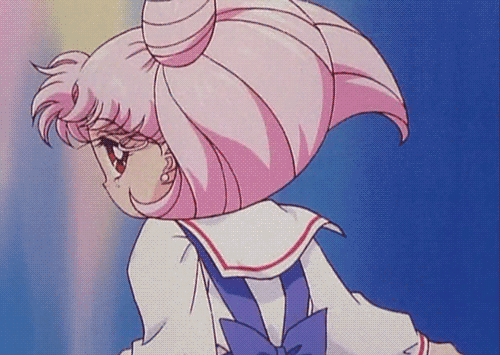
#study#korean#koreanlanguage#koreanstudy#koreanstudying#한국어#한국어연습#한국어공부#한국어공부중#한국어배우기#korean language#한국어 배우기#한국어 공부하기#korean learning#korean langblr#learn korean#korean lesson#korean words#korean voca#korean vocabulary list#korean vocab#korean vocab list#korean vocabulary#한국어 단어#한국어 배우다#한국어 공부#한국어 어휘
327 notes
·
View notes
Text
World Building continued: Backstory for the wars involving Flower Hill, Teikoku, and Usuhan Jiyeog, and subsequent occupations.
Apologies in advance for this being so long. I wanted to know how widespread Japanese weasels are in real life, and found something interesting I could use.

Japanese weasels originate from three areas of Japan, that being Honshu, Kyushu, and Shikoku.
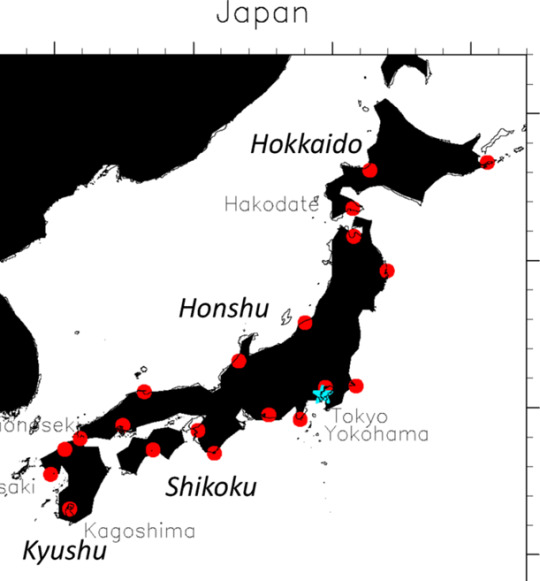
Coincidentally, Japan famously has three Ceremonial Regalia in the form of a sword, magatama beads, and a mirror. These items are not seen by anyone other than the royal family and certain priests (images on the internet are recreations of what they could possibly look like, and those seen in public are symbolic stand-ins), but they symbolize the authority of the royal family.
Which allows me to make a backstory for my AU to help explain the wars and occupations, very loosely based off of events and locations in history, especially since animal biology limits certain events from happening.
In the past, there was an Emperor, who preferred for Teikoku to be in isolation. Under his rule, and of those before him, are smaller prefectures run by princes, lords, or other lessor royal families.
Contact with the United States Alliance and other nations led to a period of aggression and imperialism surrounding the empire of Teikoku, as they strove to fight against a stagnating economy that believed in its own superiority in the world, as well as a strict caste system preventing innovation.
Eventually, after some time, three princes are sent out to conquer the final few neighboring islands, so that may join the empire, and provide a larger force for when they make a move for the peninsula and the mainland.
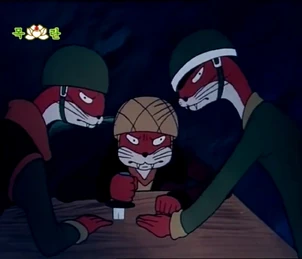
The three princes are named after their prefectures, and the Emperor has given them each one of the Imperial Regalia as proof of their superiority.
The Sword
Honshu is the main island of Japan, and is also known as the dragonfly island. Teikoku will call it Tonbo, which refers to dragonflies, which are fierce and deadly creatures. As such, their Imperial Regalia is the sword, Yūki no ken (the sword of valor), and is based off of Kusanagi-no-Tsurugi (Grass-Cutter). Tonbo is the main physical fighting force of Teikoku.
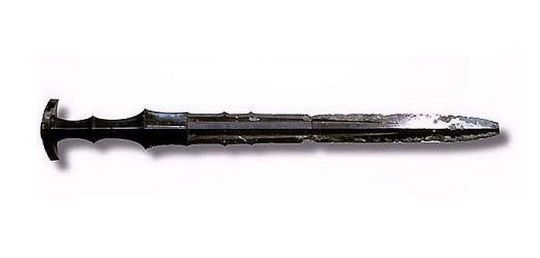
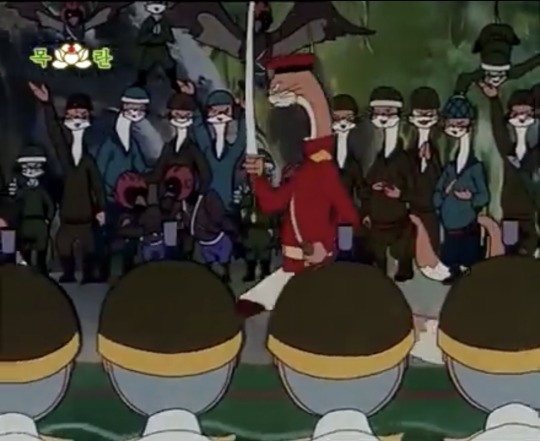
The Magatama Jewels
Kyushu is smaller than Honshu, but it had a lot of trade circuits around the ocean and the mountains. So I will make a prefecture named Kairo (Circuit), and have the area be responsible for trade and roads around the empire, as well as in the fighting forces. I would use the famous Magatama jewels (Benevolence) to symbolize their rule.
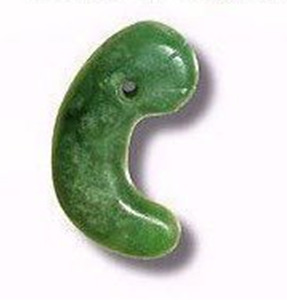

The Mirror
Shikoku means four provinces, and is the least populated area of the three areas. Shikoku also has a lot of temples (perhaps run by green pheasants, the national symbol of Japan), which draws in a lot of pilgrims. But they also maintain a lot of gateways to other prefectures. So maybe Genkan for entryway. They are responsible for planning and strategizing for the other two. They can have the Michi no kagami, mirror of the path to represent wisdom/truth, based on the Yata no Kagami.
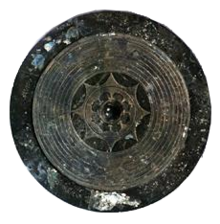
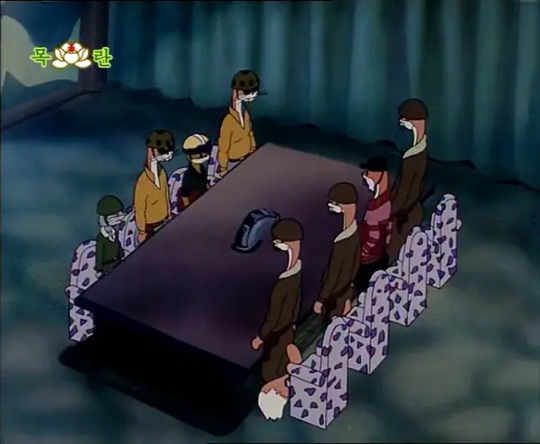
VERY loosely taking inspiration from The Tale of the Heike, a collection of Japanese epic poetry with many translations and retelling (actually written down 200 years after said events supposedly happened), which says that the royal families that held these Regalia were defeated in a naval battle, and threw themselves and the treasures into the sea. Subsequent legends suggest that many search and diving parties have been led to recover the Regalia.
In my AU, I hold that the items were thrown into the sea, with the princes believing that they could return for them later even if they were captured, although they managed to escape. It was a complete disgrace for the Emperor, as without the Ceremonial Regalia, the legitimacy of the entire palace was thrown into question.
And then the box holding the Magatama washed up on the shores of the peninsula.

It is returned as a gesture of good will, but as no good deed goes unpunished, Teikoku believes that they must have taken the other Imperial Regalia for themselves, starting a land invasion. The small army is annihilated by farmers, fresh out of overthrowing their own monarchy, wielding guns, which Teikoku has never seen before.
Which results in a larger army being sent, which is also defeated and the princes captured and possibly executed by the hedgehog army in the north of the country. At this point, without the authority of the Ceremonial Regalia, and increasing economical desperation, the country is forced to undergo a reformation. While there is still an Emperor, he does not hold as much political power as he once did.
Teikoku left behind settlements of soldiers and colonists controlling the southern portion of the peninsula, which they name Usuhan Jiyeog, who take up ruler-ship and fish farming.
The hedgehogs use the proof of their power in defending their areas to take control of what they would name Flower Hill.

It is a strongly held belief that before they backed away from Usuhan Jiyeog, the Emperor promised that anyone who managed to retrieve the Ceremonial Regalia from Flower Hill would be reinstated as the next emperor, and be rewarded with power beyond their wildest dreams.
Did the other two, heavier, items, even wash up on the shores of the peninsula like the jewels, locked in an airtight box? Or did they sink to the bottom, as they were heavier? Who is to say...
But alongside the greed, desperation for power, and food production issues, the temptation of finding the supposedly stolen Imperial Regalia locked away in some distant stronghold is a good enough reason as any to attempt to occupy Flower Hill.
Now, I'm not about to retcon what I have already written and say that Commander Jogjebi wanted the sword and mirror, and Huinjogjebi is a weasel of science who would likely not be interested anyway. But claiming that Flower Hill stole precious items and symbols of their country in the past, and them not being able to disprove it, is enough of an excuse to make quite a few countries in the international courts turn a blind eye to the happenings surrounding Flower Hill.
Oil Production
I did figure out the oil and gas situation. I did go ahead and give the Jindo Empire a large amount of oil. The Venezuela country below the United States Alliance is now the República de Cultivos Oleaginosos, and is trying to prevent the wolves' country from occupying their regions.
Meanwhile, the vast majority of the world's oil in my AU is being produced in this country.
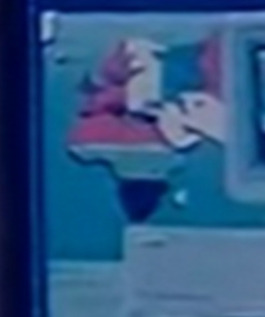
While it used to be many different nations in the past, the leaders understood that their vast oil and gas reserves would result in large scale invasions, and agreed to band together into the Equatorial Allegiance.
#no one in my AU is ending up as the new ruler of Teikoku#Mulmangcho might be a prince in Lily Bell but he is a home grown prince#I'll say that now#this is just supposed to be a footnote in the backstory of the AU#why does it have to be so detailed and complicated me?#I knew some of the legends of grass-cutter from overly sarcastic productions#but I learned about grass-cutter falling into the sea and possibly washing up from usagi yojimbo#sah#SaH#squirrel and hedgehog#lily bell in the thorn thicket#the rod that blocks the lightning#it would be like a normal (not Arthur) person showing up at the PM office with Excalibur or the bone of scone#and claiming to be the new king#I hope mixing and matching legends and such from different countries and time periods is an ok thing to do#I mean no one stopped me from writing 145K words on Korean farming so#There’s a few stories about Kusanagi-no-Tsurugi and Yata no Kagami#Items like them show up in anime a lot but I wasn’t even thinking of it when I wrote this#kind of wanted a whole Yamatai and the sun queen descendants plot line for the giggles#but Yamatai might just be Kyushu
14 notes
·
View notes
Text
artist i admire is going to a con (?) and is considering selling off leftovers online, and im so so tempted to ask them for international shipping. blease that keychain is SO cute i would die of happiness
#tütensuppe#idk how much english they know though#so ill probably chop something ugly together in korean augh#no matter how many words i learn the ones i need are not included
6 notes
·
View notes
Text

And I think to myself...
What a bunderful world!
🐰 💕 🐰 💕 🐰 💕
Let's learn some Korean words about bunnies~
오늘의 한국어 어휘:
애완동물 - a pet
동물 - an animal
쓰다듬다 - to pet, stroke
토끼를 키우다 - to raise/have a rabbit
토끼랑 놀다 - to play with a rabbit
털 - fur
풀 - grass
당근 - carrot
동물 보호서 - animal shelter
#pets of tumblr#bunny#cute art#kawaiicore#digital aritst#korean words#learn korean#learning korean#korean language#languages#digital art#art of tumblr#rabbit#cute animals#artists on tumblr#south korea#animals on tumblr#pets#artwork#kawaii aesthetic#kawaii#cutecore#cuteness#fluffy#art#digital artist
14 notes
·
View notes
Text
okay but im so happy that we are getting a non-latin alphabet language being added to the qsmp cause yay new language, new culture, very exciting and im happy that quackity studios posted that thread as well cause for at least languages that use the same alphabet, people can make guesses on what words mean but like looking at english vs korean or chinese for example, like you can't just guess that based on latin alphabet knowledge so the ccs have to use the translator feature a lot more now or actually dive into learning a language completely from scratch (ie starting with the korean alphabet system for example)
#luckily the korean alphabet is relatively easy to learn when it comes to pronunciation of the word but like knowing what the word means#you just need to memorize what each thing means#but with other languages like chinese yeah translator is going to do some heavy lifting#cause chinese doesnt really have a syllabilic alphabet system but more of a symbolic writing system#so itll be interesting if when chinese ccs get added what will come from that#idk im just being a language nerd cause i literally had this discussion in class about languages that are deemed important#as a result of colonial ideas and idk its interesting to see#qsmp#NOT TO MENTION THE ENTIRE HONORIFICS SYSTEM IN ASIAN LANGUAGES
13 notes
·
View notes
Text
Korean Word of the Day
분명히
Definitely
19 notes
·
View notes
